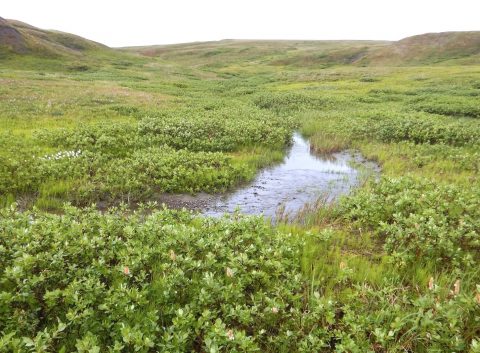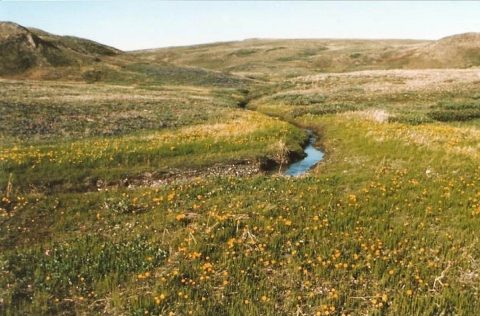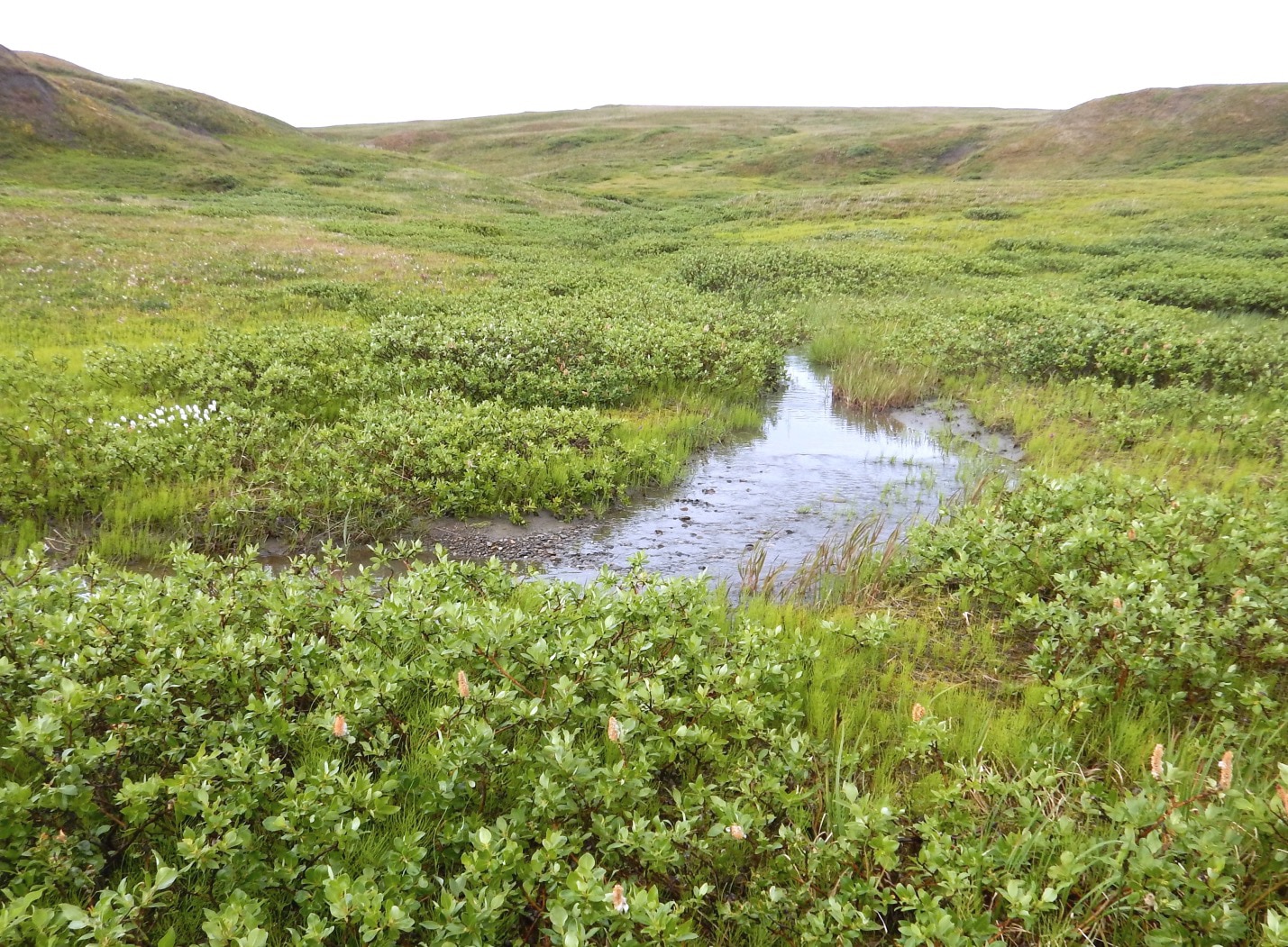NASA’s Jet Propulsion Laboratory
 Pasadena, CA – When people think of the Arctic, snow, ice and polar bears come to mind. Trees? Not so much. At least not yet.
Pasadena, CA – When people think of the Arctic, snow, ice and polar bears come to mind. Trees? Not so much. At least not yet.
A new NASA-led study using data from the Arctic Boreal Vulnerability Experiment (ABoVE) shows that carbon in Alaska’s North Slope tundra ecosystems spends about 13 percent less time locked in frozen soil than it did 40 years ago. In other words, the carbon cycle there is speeding up — and is now at a pace more characteristic of a North American boreal forest than of the icy Arctic.

“Warming temperatures mean that essentially we have one ecosystem — the tundra — developing some of the characteristics of a different ecosystem — a boreal forest,” said study co-author Anthony Bloom of NASA’s Jet Propulsion Laboratory in Pasadena, California. “While various factors regulate how fast this transformation will continue to occur, studies using Landsat and MODIS satellite imagery with field measurements over the past decades have observed a northward migration of shrubs and trees.”
And it’s not just about the trees. The Arctic carbon cycle is a delicate balance of carbon being released into the atmosphere and carbon being removed from the atmosphere.Disruptions to this balance have implications well beyond the Arctic.

During Arctic summer, warmer temperatures thaw the uppermost layers of permafrost, allowing microbes to break down previously frozen organic matter. This process releases carbon dioxide into the atmosphere.
Plant growth also increases during this period – and plants remove carbon dioxide from the atmosphere through photosynthesis. But as temperatures increase, the amount of time carbon is stored in the Arctic soil decreases.
The team combined data from more than 40 years of carbon dioxide surface measurements from NOAA’s Barrow, Alaska Observatory with a standard ecosystem carbon balance model to determine the rate at which carbon is moving in and out of Alaska’s North Slope.
Models alone previously indicated an increase in the speed of the carbon cycle, but the addition of long-term satellite, airborne and surface data to the equation shows that those models were underestimating just how significant the increase was.
The study, titled “Accelerating Rates of Arctic Carbon Cycling Revealed by Long-Term Atmospheric CO2 Measurements” was recently published in the journal Science Advances.



